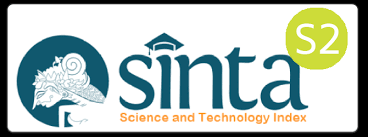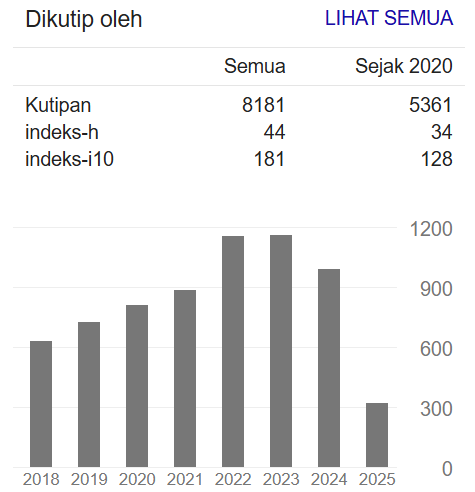DONOR DARAH DENGAN HIPERLIPIDEMIA BERDAMPAK TERHADAP KUALITAS DARAH YANG DISUMBANGKAN: SYSTEMATIC REVIEW
DOI:
https://doi.org/10.34011/jmp2k.v34i4.2647Keywords:
blood donors, hyperlipidemia, lipemic, plasma, plateletAbstract
Hyperlipidemia is currently suffered by many people, including those individuals who regularly donate blood. Hyperlipidemia occurs due to an unhealthy lifestyle. It was found that there was a decrease in the quality of donor blood, including a change in plasma color to a milky white, cloudy appearance known as lipemia, as well as a decrease in the function of platelet and erythrocyte components. The aim of this study was to determine the impact of hyperlipidemia in blood donors on the blood produced. This systematic literature review follows PRISMA guidelines, with article collection carried out using basic data from Science Direct, PubMed, Google Scholar, Research Gate and Sage Journal. The articles used were limited to publication years between 2014 and 2024. In this research, 7 articles were found that were suitable and selected. The results of this study show that there are several factors that cause an individual to experience hyperlipidemia, one of the factors that has a big influence is diet. In this study, it was discovered that donors with hyperlipidemia were more likely to produce blood products that had high levels of fat, in which case the plasma blood component became lipemic and level of hemolysis during storage was higher. Apart from that, hyperlipidemia also affects other blood products, namely the platelet component, which can produce platelets that have abnormalities in platelet composition and function. The impact of hyperlipidemia should not be ignored, better donor screening can provide better quality control to reduce the risk of this occurring.
References
R. Suhadi, P. Hendra, D. M. Virginia, C. H. Setiawan, and Y. Linawati, Seluk-Beluk Hiperlipidemia: Peningkatan Partisipasi dan Kompetensi Farmasis dalam Pencegahan Penyakit Kardiovaskuler. Yogyakarta: Sanata Dharma University Press, 2021.
J. J. Noubiap et al., “Prevalence of dyslipidaemia among adults in Africa: a systematic review and meta-analysis,” Lancet Glob Health, vol. 6, no. 9, pp. e998–e1007, Sep. 2018, doi: 10.1016/S2214-109X(18)30275-4.
World Health Organization (WHO), “Global Hiperlipidemia Report 2019,” 2019.
Kementerian Kesehatan, “Hasil Riset Kesehatan Dasar (Riskesdas),” Jakarta, 2018.
H. Y. Li et al., “Higher tacrolimus blood concentration is related to hyperlipidemia in living donor liver transplantation recipients,” Dig Dis Sci, vol. 57, no. 1, pp. 204–209, Jan. 2012, doi: 10.1007/s10620-011-1817-5.
Nur. Khasanah, Waspadai Beragam Penyakit Degeneratif Akibat Pola Makan, Satu. Yogyakarta: Penerbit Laksana. , 2012.
M. L. Bishop, Clinical Chemistry:Tecniques, Principles, Correlations. . United State: Wolter Kluwer Health, 2010.
W. Health. Organization, World Health Organization, World Health Organization. Blood Transfusion Safety, Centers for Disease Control and Prevention (U.S.), and World Health Organization, Blood Donor Selection : Guidelines on Assessing Donor Suitability for Blood Donation. World Health Organization, 2012.
N. Nikolac, “Lipemia: Causes, interference mechanisms, detection and management,” 2014. doi: 10.11613/BM.2014.008.
Meteri Kesehatan Republik Indonesia, “Peraturan Menteri Kesehatan Republik Indonesia Tentang Standar Pelayanan Transfusi Darah,” Jakarta, 2015.
M. J. Page et al., “The PRISMA 2020 statement: an updated guideline for reporting systematic reviews,” BMJ, p. n71, Mar. 2021, doi: 10.1136/bmj.n71.
W. Wongsena and R. P. Sranujit, “Risk Factors for Lipemic Plasma in Blood Donors,” J Hematol Transfus Med, vol. 27, pp. 117–125, 2017, [Online]. Available: https://www.researchgate.net/publication/318323645
L. A. E. de Laleijne‐Liefting, J. W. Lagerberg, and D. de Korte, “Quality of erythrocyte concentrates derived from lipemic whole blood donations,” ISBT Sci Ser, vol. 13, no. 4, pp. 440–445, Dec. 2018, doi: 10.1111/voxs.12478.
Y. H. Guerra, P. S. Frenes, M. De Jesús Sánchez, M. Castellanos González, C. M. Mora Hernández, and I. M. Silva, “Lipidemia in Blood Donors and its Association with Risk of Cardiovascular Diseases,” Revista Finlay, vol. 8, no. 2221–2434, pp. 179–203, 2018, [Online]. Available: http://www.revfinlay.sld.cu/index.php/finlay/article/view/641
S. Nishat Fatima Rizvi, Tulika Chandra, Abbas Mahdi, and Devisha Agarwal, “Hyperlipidemic Platelets in Blood Donors: A Correlative Study in North Indian Population,” ternational Journal of Medical Research and Health Sciences, vol. 8, no. 4, pp. 131–139, 2019.
M. Raturi and A. Kusum, “Deciphering the reasons for milky-white blood donor plasma,” Transfusion Clinique et Biologique, vol. 27, no. 4, pp. 259–261, 2020, doi: 10.1016/j.tracli.2020.08.006.
D. Radonjić, S. Raičević, D. Kljakić, and M. Varjačić, “The reasons for unusable lipemic blood plasma in transfusion treatment,” Srp Arh Celok Lek, vol. 149, no. 7–8, pp. 449–454, 2021, doi: 10.2298/SARH200919040R.
M. de Oliveira, M. Antunes, and M. Amil, “Plasma lipemia: When the blood donor becomes a patient,” Transfusion and Apheresis Science, vol. 61, no. 1, p. 103294, 2022, doi: 10.1016/j.transci.2021.103294.
Benjamin Caballero, Lindsay Allen, and Andrew Prentice, Encyclopedia of human nutrition, Fourth., vol. 4. Elsevier Science (E), 2023.
S. Piyophirapong, W. Wongtiraporn, and . K Sribhen, “Factitious Results in Clinical Chemistry Tests Caused by Common Endogenous Interferents,” Siriraj Med J, vol. 62, no. 4, pp. 185–188, 2020.
Michael D. Willard and Harold Tvedten, Small Animal Clinical Diagnosis by Laboratory Methods, Fifth. ELSEVIER, 2012.
J. E. Lambert and E. J. Parks, “Postprandial metabolism of meal triglyceride in humans,” Biochimica et Biophysica Acta (BBA) - Molecular and Cell Biology of Lipids, vol. 1821, no. 5, pp. 721–726, May 2012, doi: 10.1016/j.bbalip.2012.01.006.
Faizatul Fitria and Ira Oktavia, “Effect Of Alcohol Consumption On Triglyceride And Hdl Levels In The Blood,” Jurnal Pharma Bhakta, vol. 3, no. 1, pp. 27–33, 2023.
M. Raturi, A. Ahlawat, M. Kala, A. Kusum, and A. Sahrawat, “Strawberry milky-white blood donor’s plasma: signaling uncontrolled diabetic lipemia,” Transfusion Clinique et Biologique, vol. 28, no. 3, pp. 291–292, Aug. 2021, doi: 10.1016/j.tracli.2021.03.002.
N. D. Knuth and J. F. Horowitz, “The Elevation of Ingested Lipids within Plasma Chylomicrons Is Prolonged in Men Compared with Women,” J Nutr, vol. 136, no. 6, pp. 1498–1503, Jun. 2006, doi: 10.1093/jn/136.6.1498.
M. Raturi and A. Kusum, “Deciphering the reasons for milky-white blood donor plasma,” Transfusion Clinique et Biologique, vol. 27, no. 4, pp. 259–261, Nov. 2020, doi: 10.1016/j.tracli.2020.08.006.
S. Dalimartha and F. A. Dalimartha, Tumbuhan sakti atasi kolesterol. Jakarta: Penebar Swadaya Grup., 2014.
K. J. Marcdante, R. M. Kliegman, H. B. Jenson, and R. E. Behrman, Nelson essentials of pediatrics, 8th ed. Elsevier Health Sciences, 2021.




